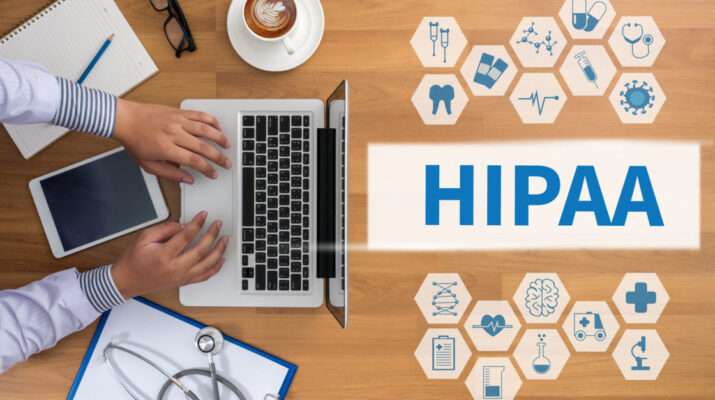In the realm of biohazardous waste, few matters are as critical as proper employee education. It’s the protect that deflects the unseen arrows of pathogens, the armor that protects your team of workers, and the inspiration for a safe and compliant place of job. When it involves schooling, two titans stand tall: HIPAA and OSHA Bloodborne Pathogen training.
HIPAA: Guarding Privacy in the Biohazard Battlefield
The Health Insurance Portability and Accountability Act (HIPAA) might not appear likethe plain champion inside the biohazard area; however, its function is vital. It acts as the mother or father of affected person privacy, making sure that touchy medical records, which includes bloodborne pathogen check consequences, are handled with utmost discretion.
Here’s how HIPAA education equips your personnel:
Privacy recognition: Training educates employees on the scope of HIPAA policies, emphasizing the importance of safeguarding patient records and averting unauthorized disclosures. This is especially important whilst managing biohazardous waste, which frequently carries identifiable affected person facts.
Minimum essential standard: Employees discover ways to restrict the use and disclosure of affected person facts to the minimal necessary to perform their job responsibilities. This prevents needless publicity of private facts and reduces the risk of unintended breaches.
Breach prevention: Training equips personnel with the knowledge and abilities to identify and prevent ability HIPAA violations. This includes right coping with of medical information, comfortable disposal of biohazardous waste, and reporting suspicious activity.
OSHA’s Bloodborne Pathogen Shield: Protecting Your Workforce from the Frontlines
While HIPAA guard’s patient privacy, OSHA’s Bloodborne Pathogen Standard equips your employees with the essential armor to stand the biohazard threat head-on. These trendy mandates comprehensive training to shield employees from publicity to bloodborne pathogens like hepatitis B, hepatitis C, and HIV.
OSHA training covers critical factors like:
Exposure risks: Employees learn about the diverse approaches they may be uncovered to bloodborne pathogens via needlesticks cuts splashes and mucous membrane contact. This awareness allows them decrease risky behaviors and undertake secure paintings practices.
Engineering and paintings practice controls: Training emphasizes the importance of using private protecting system (PPE) like gloves robes and face masks when coping with biohazardous substances. Additionally it covers safe managing approaches for needles, sharps, and infected waste.
Emergency reaction tactics: Employees are trained on right tactics in case of an publicity incident, which includes first useful resource reporting post-publicity prophylaxis. This rapid reaction can reduce the chance of transmission and ensure timely medical intervention.
Integrating the Double Defense: HIPAA & OSHA Training Working in Tandem
HIPAA and OSHA Bloodborne Pathogen training aren’t simply standalone acts they’re a coordinated defense towards biohazards. Combining them creates a comprehensive defend that protects each affected person privateness and worker protection.
Here’s how they paintings collectively:
Minimizing publicity dangers: By minimizing unnecessary coping with of affected person statistics through HIPAA training the potential for exposure to bloodborne pathogens through infected documents is decrease.
Safe disposal practices: Both education applications emphasize proper disposal of biohazardous waste lowering the risk of environmental contamination and capacity exposure to workers or the public all through waste managing.
Incident reaction: In case of a publicity incident, HIPAA education ensures affected person data is treated discreetly at some point of investigations and comply with-up approaches.
Investing in Employee Defense: The ROI of Training
Proper worker education on HIPAA and OSHA Bloodborne Pathogen standards isn’t always only a felony requirement it is a wise funding with sizeable returns.
Reduced threat of fines and consequences: By ensuring compliance with guidelines you keep away from highly-priced fines and penalties associated with HIPAA violations or employee exposure to bloodborne pathogens.
Improved employee morale and engagement: Knowing they are well-geare up to handle biohazards and protected by means of proper schooling empowers employees and boosts morale, leading to stepped forward engagement and productiveness.
Lower healthcare fees: Minimizing exposure dangers reduces the probability of worker injuries and ailments associated with bloodborne pathogens, main to decrease healthcare fees to your enterprise.
Stronger employer popularity: Demonstrating a commitment to employee safety and affected person privateness enhances your corporation’s reputation as responsible and moral enterprise attracting and maintaining skills.
Conclusion: Building a Fortress against Biohazards
In the regular conflict towards biohazardous waste disposal, equipping your group of workers with the double defense of HIPAA and OSHA Bloodborne Pathogen education is a crucial step. By instructing your employees on privateness safety and biohazard safety you construct a citadel that shields not simply your enterprise but the properly-being of your employees and network you serve. Remember a well-trained workforce is a prepared workforce and prepared workforce is a safe and thriving asset in the fight for public health and environmental well-being. Invest in your employees knowledge and empowerment.
It’s not just a compliance box to tick it’s shield you build together against the unseen threats of the biohazard world. Let every training session be step towards a safer healthier future for all where patient privacy and employee safety stand side-by-side not as separate entities but as pillars of a responsible and respected organization. Make HIPAA and OSHA training your first line of defense and let your commitment to biohazard awareness resonate throughout your company and beyond one empowered employee at a time.



